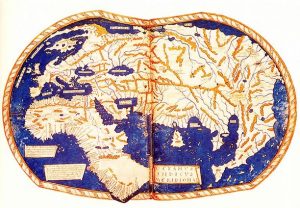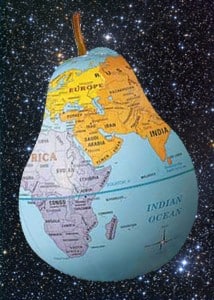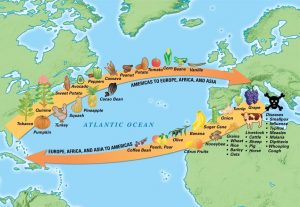6 Facts about Christopher Columbus’ Expedition to the New World from an Environmental Engineer’s Perspective

In recent years, there has been a lot of controversy surrounding Columbus, particularly for his treatment of the native peoples he found in the new land. In fact, many Americans support either changing the Columbus Day holiday to Indigenous People’s Day as the City of Berkeley, California did in 1992, or of abolishing the holiday altogether. Rather than discuss the value, or lack thereof, of Columbus and his voyages, we are examining six interesting facts about Columbus — from an environmental engineer’s point of view:
- Portugal, England, and France all refused to fund Columbus’ voyage because they thought he was a fool. They all believed that the Earth was far larger than he had calculated – and they were right. His calculations were not only consistently faulty, they were also based on an incorrect measure for a mile. Clearly, Columbus would have been an extremely unsuccessful engineer.
-

Columbus’ theory of a pair-shaped Earth made him the laughing stock of Europe Finally finding a country to fund his dubious plan, Christopher Columbus and about 120 crew members set sail from Palos, Spain on August 3, 1492. His expedition sailed in search of a direct water route to China, India, and Asia — and the valuable spices they held. They spotted land on October 11, 1492, and on October 12, 1492, Columbus and his crew landed on what is likely Watling Island in the Bahamas. Columbus thought he had landed on India, and named the land the Indies. Later that same year, Columbus sighted Cuba, which he mistook for China, and Hispaniola, which Columbus mistook for Japan. In actuality, Columbus and his crew were over 8,000 miles away from their intended target, offering further proof that his calculation skills were less than exemplary. In fact, Columbus died maintaining that he had found a new passage to India. To stubbornly justify his position, he proposed that the Earth was pear-shaped, making him the laughing stock of Europe.
- Crews drank mostly wine during their voyage. Both wine and fresh water were stored aboard the ships in wooden casks. Water stagnates very quickly, which is why modern day water storage tanks employ design and technologies that avoid excessive water age. However, in the time of Columbus, the only option was to drink wine and beer. Wine was the drink of choice on Columbus’ ships, and not just because the water was stagnated: the alcohol also killed many disease-causing pathogens. And while Columbus and his crew didn’t understand the science, what they did understand was that water made them sick, whereas wine didn’t.
-

Map showing the exchange of goods between Europe and the Americas During the 43-day long voyage, chamber pots were used and emptied overboard, people wore the same set of clothes they set sail in, and fleas and rats ran rampant. Needless to say, sanitation was a huge issue, and every single person—including Columbus—had lice. People of the time didn’t understand the importance of hygiene in the prevention of disease. Today, things are much different. Even our wastewater is so highly treated that it is actually potable.
- Once again lacking any type of environmental knowledge, Columbus and his men wreaked havoc on the island’s natural ecosystem. He and his crew introduced wheat, olives, oranges and lemons, sugar cane, pomegranates, cucumbers, lettuce, dates, melons, and grapes to the area, and these new species spread like wildfire, overwhelming the native plants that had previously been there for literally hundreds of thousands of years.
- To end on a positive note, Columbus introduced technology to the new world. Prior to Columbus’ arrival, America remained largely unchanged for thousands of years. The indigenous people were primarily nomadic hunters and gatherers who often engaged in wars with one another. While there remains a very heated controversy over treatment of Native Americans, there is a silver lining: Columbus did bring technologies and innovations of people such as Aristotle, Newton, and Galileo to the new world, making America what it is today.

Hmm… technology? I differ on this one. What technology?
With Columbus’s discovery of the Americas in 1492, a period of cultural, technological, and biological exchanges began between the Old and New Worlds. This is often referred to as the Columbian Exchange and it transformed the world. The Columbian Exchange impacted agriculture and social change. It advanced warfare, changed cultural behaviors, transferred knowledge, and yes, advanced technology.
Amazing facts. Atleast they completed voyage and that too at that time.